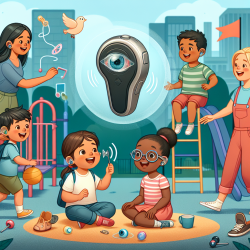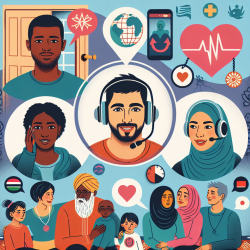Leveraging Media Insights to Enhance Online Therapy for Children
As a practitioner dedicated to improving outcomes for children through online therapy, it's crucial to stay informed about the latest research and its implications. A recent study titled The Media and Sexual Violence Among Adolescents: Findings from a Qualitative Study of Educators Across Vietnam offers valuable insights that can be applied to our practice. This blog will explore how the findings from this study can help us enhance our online therapy services at TinyEYE, particularly in addressing the influence of media on children's development and behavior.
Understanding the Research
The study conducted 45 interviews with high school teachers, university lecturers, and community service organization affiliates across Vietnam. The research aimed to understand the contextual influences and needs for scaling up sexual violence prevention programming in the media-violence context. Key findings highlighted the significant role media plays in shaping youth attitudes and behaviors regarding sexuality and sexual violence.
Key Findings and Their Implications
The study identified several critical points:
- High Accessibility of Media: Adolescents have easy access to a wide range of media, including both beneficial and harmful content.
- Variable Quality of Information: The quality of information available to adolescents is inconsistent, with much of it being unregulated and potentially misleading.
- Normalization of Sexual Violence: Media often portrays sexual violence and coercion as normal, which can influence adolescents' perceptions and behaviors.
- Opportunities for Positive Use: Media can also serve as a valuable tool for disseminating accurate information and providing social support.
Applying the Findings to Online Therapy
Given these findings, here are some actionable steps we can take to enhance our online therapy services:
1. Integrate Media Literacy into Therapy Sessions
Educate children and adolescents about media literacy, helping them discern between reliable and unreliable sources of information. This can empower them to make informed decisions and reduce the influence of harmful content.
2. Provide Accurate and Age-Appropriate Information
Ensure that the content we provide during therapy sessions is accurate, age-appropriate, and aligns with the latest research. This can help counteract the misleading information they may encounter online.
3. Address the Normalization of Sexual Violence
Discuss the portrayal of sexual violence in media and its impact on perceptions and behaviors. Encourage open conversations about consent and healthy relationships to help children develop a clear understanding of these concepts.
4. Utilize Media as a Positive Tool
Leverage media to provide educational content and social support. Create engaging and informative resources that can be easily accessed by children and their families.
Encouraging Further Research
While this study provides valuable insights, it's essential to continue researching the impact of media on children's development. Encourage practitioners to stay updated with the latest research and incorporate evidence-based practices into their therapy sessions.
Conclusion
By understanding and addressing the influence of media on children's development, we can enhance our online therapy services and create better outcomes for children. To read the original research paper, please follow this link: The Media and Sexual Violence Among Adolescents: Findings from a Qualitative Study of Educators Across Vietnam.










